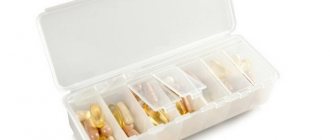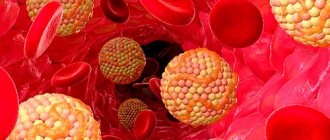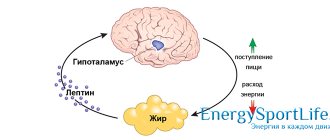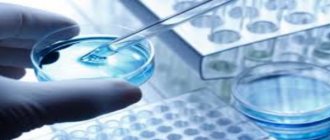It’s no longer a secret to anyone that you need to drink about two liters of water a day. But are you able to meet this daily requirement? Probably not. To make staying hydrated easier, Los Angeles-based celebrity nutritionist Kimberly Snyder, whose clients include Reese Witherspoon, Drew Barrymore and Kerry Washington, shared her recommendations. Read them below and head to the cooler for a glass of water.
“Everything in our body - from organ function to hormonal balance - depends on the amount of fluid. When water balance is normal, joints are lubricated, skin becomes smoother and more even, and hair grows healthier. Conversely, when the body is dehydrated, skin appears dull, ends become brittle, energy decreases, and metabolism slows, explains Kimberly Snyder.
View on Instagram
Water in the human body.
Water-salt balance is a complex of interacting processes that involve water and salt. Everything is very clear: this is their entry into the body, absorption by tissues and organs, and excretion.
They say that every person is 50% water. In fact, its volume fluctuates depending on various factors, including age. Thus, an infant’s body is 77% filled with water, an adult man is 61% filled, and a woman is 54%. Why is the rate lower for representatives of the fair sex? It's all about the large number of fat cells with which the female body is strewn. As he ages, he loses even more water.
Why is it important to maintain salt balance?
Under no circumstances should you overdo it with salt. It’s not for nothing that they say about it – “white death”, because this seasoning can contain sodium and potassium ferrocyanides that are dangerous to health, which are added to make the salt snow-white. I always carefully read the composition of physical and chemical indicators, and if I see the above names, I refuse to purchase.
If we ate a lot of salty foods during the day, then in the following days it is better to limit our salt intake as much as possible. If we drank a lot of water, then the amount of salt can be increased slightly, because it is washed out with the liquid. The daily dose of salt for a sedentary lifestyle is 10 grams. It should be taken into account that it is contained in ready-made products, for example, bread, spices, cheese. Therefore, you need to add just a little salt to your food - no more than five grams per day.
It is not possible to determine the norm with an active lifestyle: you should focus on your own taste, but at the same time remember that over-salting is fraught with disastrous consequences.
Water balance and its benefits.
I will repeat the rule everyone has heard regarding how many liters of water a person should drink: at least one and a half to two liters of water per day. Only in this case the water balance is maintained at the proper level. But! We must understand that we are talking about water in general, that is, not only that which we drink from bottles, but also that contained in the foods we eat. If we follow the norm, we do not feel thirsty. It occurs in cases where the diet contains food that is spoiled or full of harmful additives.
Another important rule: drink water not in glasses, but in sips. We take two sips and relax. Then two more and rest again, and so on. Drinking a glass at once is a serious stress for the body; the blood thins out instantly.
Many have observed the following characteristics: when they have eaten too much salty food, they crave sweets; if you eat something sweet, you are thirsty; quenched your thirst - you want salty food again. It turns out to be a vicious circle. But there is a reasonable explanation for it: drinking water dissolves salt and sugar, and we want sweet after salty and vice versa, simply in order to get rid of the unpleasant sensations of overeating sugar or salt. The body has a hard time from such cycles, excuse the pun.
What kind of water should I drink?
You should know that mineral water can be medicinal and table water. It is not advisable to buy table water from dubious stores, since they often sell counterfeits. Medicinal waters should not be drunk regularly as they disrupt the body’s water balance. In this case, a person may experience problems in the functioning of the joints.
Doctors recommend using high-quality table water every day. To check the quality of the product you need to:
- read product licenses in the store;
- dial the hotline number and find out whether the product was produced;
- carry out water testing in laboratory conditions.
You should know that carbonated water can be harmful to health, since the body is saturated with excess carbon dioxide. To get rid of it, the body spends time and loses fluid. Therefore, it can lead to dehydration. To find out whether dehydration is present, you need to listen to your doctor and remember the rules for determining water balance.
Where does the drunk water go?
Everything we drink is distributed to different tissues and organs. Two-thirds of the volume is intracellular fluid, another third is extracellular. Water in our body is retained by colloids or takes part in the process of decomposition of proteins, fats and carbohydrates.
The water entering the tissues is more saturated with potassium, magnesium and phosphate ions than that concentrated in the intercellular space and blood plasma. At the same time, there are fewer calcium, chlorine, sodium and bicarbonate ions in the tissues. This is explained by the thinness of the capillary wall for proteins.
If the water-salt balance is not disturbed, then the composition and volume of the incoming fluid will also be normal.
Removing water from the body.
The role of the kidneys in the life of the body is extremely important. With the help of these organs, ion exchange occurs and unnecessary cations and anions are removed. The kidneys help maintain the required level of intercellular fluid and maintain its correct composition.
The two and a half liters of fluid that a person drinks every day (ideally) are subsequently eliminated by the following organs:
- kidneys – 1.5 liters;
- skin, lungs – 900 milliliters;
- intestines – 100 milliliters.
It turns out that maintaining the water-salt balance is the task of several organs acting in conjunction.
Daily human need for water
Under normal conditions, a person needs an average of 2.5 liters of water per day (the exact figure can be determined using the formula below). It receives approximately 1.5 liters from drinks (water, juice, tea, coffee, etc.), 0.7 liters from solid food, and 0.3 liters is formed in the human body during the oxidation of food.
To accurately calculate water needs, you can use a simple formula: the body needs 35-40 ml of water per 1 kg of body weight per day. Knowing your weight, you can make all the calculations in a few seconds.
For example, you weigh 75 kg. We substitute this value into the formula: multiply 75 kg by 35 ml (0.035 l) and get 2.62 liters. Thus, with a body weight of 75 kg, the body’s daily need for water is 2.62 liters.
A certain amount of fluid is removed from the body every day. About 1.5 liters of liquid are excreted in the form of urine per day, 0.9 liters through the lungs and skin, and 0.1 liters through feces. Total - 2.5 liters (under normal conditions). External conditions, such as air temperature and physical activity, have a significant impact on the overall water balance. It is logical that in the hot season or during physical activity the body loses more fluid - these losses must be replenished, i.e. drink extra fluid.
During hot weather, our body becomes very hot. In summer, the sun can reach +50°C, which significantly exceeds the normal human body temperature. Overheating can be very dangerous for a person - remember your condition at high temperatures during illness. Therefore, to maintain normal body temperature in hot weather, the human body evaporates liquid from the surface of the skin - this is how the body cools. Obviously, his need for water increases during hot weather.
For example, at an ambient temperature of +25°C (comfortable conditions), the amount of sweat produced is 500 ml per day. But for every 1°C increase in air temperature, sweating increases by an average of 100 ml. It turns out that at +35°C the body loses 1500 ml of fluid only through sweat and is in dire need of replenishing its reserves.
Causes of disruptions in water-salt balance?
The water-salt balance is disturbed if a lot of fluid accumulates in the body and it is poorly excreted. Liquid fills the intercellular space, overwhelms the cells, causing them to swell. It happens that the process does not bypass the cells of the nervous system, as a result of which they become excited and the person experiences convulsions.
The opposite situation is when fluid is removed from the body too quickly and in large quantities. As a result, the thickness of the blood increases, which can cause blood clots. A water shortage of 20% can lead to death.
Symptoms
When there is a lack of water in the human body, the thickness of the blood increases, as a result of which the metabolic process is disrupted. Cells receive fewer useful substances, and the removal of toxic elements becomes more difficult. Symptoms of water imbalance include:
- problems in the functioning of the cardiovascular system;
- vomit;
- increased body temperature;
- migraine;
- painful sensations in the back;
- allergic skin rashes;
- disorders in the gastrointestinal tract.
In the process of treating any disease, it is important not only to eat right, but also to establish a drinking regime. Sometimes drinking water is enough to make you feel better. Water is the key to good health.
Symptoms: Dry skin, blue lips, swelling, brittle hair.
Disruptions in the water-salt balance are very noticeable by a person: weight decreases, the skin becomes dry, as well as the cornea. A serious lack of moisture turns fatty tissue into “dough”: this is exactly what its consistency becomes. Blood circulation slows down, protein metabolism is disrupted, blood pressure drops, and the pulse rhythm is disrupted (it can either speed up or slow down). Outwardly, this is manifested by sunken eyes, a pointed nose, and blue lips and nails. We feel cold in the upper and lower extremities and cannot warm up for a long time.
Disturbances in the water-salt balance are manifested by diluted stools, thirst, nausea and vomiting, and the appearance of severe edema. Hair becomes brittle, falls out, and the skin turns yellow. If at least some of these signs are observed, you should urgently consult a doctor, since an imbalance of water and salts in the body can cause cardiac arrest.
A calcium deficiency can lead to convulsive spasms of the larynx, and its excess can lead to thirst, vomiting, stomach pain, and frequent urge to urinate.
If there is little potassium in the body, the acid-base balance is disturbed, muscle tone decreases, chronic renal failure and intestinal obstruction develop, and the heart and brain suffer. Excess potassium causes vomiting, can lead to paralysis, and threatens to stop the atria. You can read a separate article by Doctor of Biological Sciences Galina Nikolaevna Grossmann about healthy and varied nutrition for weight loss, on which tens of thousands of people have already lost from 8 to 15 kg per month HERE
Due to poor kidney function and excessive use of antacid medications, large amounts of magnesium accumulate, which can be manifested by the following symptoms: slow heart rate, nausea and vomiting, and fever.
As for sodium, its deficiency or oversaturation can be true and relative. True deficiency is a consequence of intestinal obstruction, severe sweating, and salt deficiency. It can also be caused by burns. Relative deficiency develops due to oversaturation of the body with aqueous solutions, when a lot of them come in and the kidneys do not have time to excrete them in the required quantity. Consumption of table salt in large quantities can cause the formation of a true excess of sodium. The problem also arises if the kidneys cannot cope with the elimination of this substance. We can talk about a relative excess if the body is dehydrated.
Factors affecting the exchange of water and salts
What causes disturbed water-salt balance?
Firstly, this is the result of the body’s desire to maintain a constant blood density. During exercise, the body loses a large amount of fluid, which serves as the main thermostat. Salts are often excreted along with the liquid, as they bind this liquid into a single structure. The amount of liquid decreases, and with it the amount of salts. But when an athlete consumes new liquid during/after training, he does not always take into account the fact that the incoming water does not always compensate in its mineral composition for the amount of excreted salts.
The second factor that affects the water-salt balance is the metabolic processes themselves. During the process of acceleration/deceleration, the course of metabolic processes changes. As a result, the exchange of the inorganic component of our body also changes. If metabolism is disrupted under the influence of harmful factors (excessively strict diet), then the body strives to put it in order, forcing all systems to work to the limit of their capabilities.
Let's look at a simple example. Let's say a person goes on a strict no-carbohydrate diet. Because of this, the focusing power of the eye lens is weakened, resulting in poor vision. To restore vision, the body begins to release more phosphorus into the blood (from reserves), which restores vision, but phosphorus consumption increases and its levels are depleted.
And the last factor that affects the water-salt balance is drying the body before competitions. Since the main task of the athlete at this stage is to make the muscles as prominent as possible and get rid of the fat layer, he consumes more water. All this leads to the fact that the amount of sodium that binds the blood in relation to the total amount of water decreases. And since the body strives to maintain a certain thickness of the blood, it removes all excess fluid along with minerals and salts that have not yet been fully used. Which leads to general exhaustion. And sodium levels directly affect the amount of blood in the body. Thus, extreme drying with weight loss reduces the amount of fluid in the body to 40-45% against the standard 60-65%. As a result, the impressive topography causes health problems.
Negative consequences
So, excessive fluid consumption during training, on the one hand, increases performance, but on the other, harms the body. Acceleration of metabolism and thermoregulation by removing excess sweat causes a pronounced water-salt imbalance.
In turn, any change towards the removal of salts can lead to:
- Brain dysfunction. A lack of salts reduces the current conduction of impulses, which comprehensively disrupts the functioning of everything connected to the brain and spinal cord.
- Cramps. Since the flow of fluid in the body is more free, sometimes the rush of blood into the contracting muscle can cause a “pump spasm”, which will lead to an unregulated spasm at the nervous level.
- Dysfunctions of the organs of vision. Phosphorus is a lubricant for the eye lens, which regulates the thickness of the tear layer and helps focus the pupil.
- Dysfunctions of the gastrointestinal tract. Without enough minerals, the acidity in the stomach will not have sufficient breaking down power, which will cause the body to increase it overall, which in turn will irritate the intestinal walls and can lead to erosion.
- Decreased immunity.
- Reduced hormone synthesis. For example, the thyroid gland also works on minerals and salts. And the pituitary gland, which is responsible for the synthesis of testosterone and growth hormone, directly depends on the presence of phosphorus, magnesium and zinc. If these minerals are washed away with water along with the salts, you can forget about high testosterone levels.
Interesting fact: many complex testosterone stimulants are often based on three factors: nitrogen donors (the so-called Viagra pump), direct testosterone stimulants and (attention!) restoration of the mineral balance of zinc and magnesium. It is the latter factor that is considered the determining stimulant.
Oxygen poisoning
The body strives to split water into hydrogen and oxygen (actually oxygen). With intensive fluid consumption, the kidneys do not always cope with the increased load and cannot metabolize all the water into urea and blood. All this leads to the accumulation of excess oxygen in the body, which has an extremely negative effect on its condition. The air we breathe is saturated with oxygen by 20% and at the same time has a drying effect on the body. To test this hypothesis, simply try breathing with your mouth open at a fast pace for 5-7 minutes. First of all, you will feel dry mouth. And then oxygen poisoning will lead to dizziness, sometimes even fainting.
Sodium is responsible for the regulation of oxygen in the blood and, as we said earlier, it is broken down with the consumption of large amounts of water. Therefore, the incoming liquid actually breaks down into oxygen, which dries the body from the inside. The main conclusion follows from this: 8 liters of water drunk within 1-2 hours causes salt depletion, then oxygen poisoning, and without sodium can lead to fatal consequences.
Note: to avoid such problems during training, try to drink still mineral water or add some salt to it if you bring purified well water to training.
How to restore water-salt balance with the help of medications?
It is quite difficult to identify an imbalance based only on symptoms, so their occurrence must be immediately reported to a specialist who will conduct an examination. Restoring the body’s water balance, as well as the salt balance, can be achieved by various methods of treatment: with the help of medications, taking chemical solutions at home or on an outpatient basis. Let's take a closer look at each method:
- Drug treatment. It involves the patient taking special vitamin and mineral complexes rich in various beneficial substances - sodium, magnesium, calcium, potassium, silicon and others. These are precisely the elements that maintain water-salt balance.
- Chemical treatment. It involves taking a salt solution. Ready-made packages are sold in pharmacies, but the solutions have a number of contraindications (diabetes mellitus, liver disease, kidney failure, etc.), so using them without a doctor’s prescription is strictly prohibited. Previously, such solutions were prescribed to patients who experienced dehydration as a result of severe diarrhea, vomiting, and dysentery.
- Ambulatory treatment. In some cases, restoring the salt balance in the body is impossible at home. The patient is placed in a medical facility and prescribed the necessary medications and solutions, which he takes under medical supervision. In the hospital, the patient is prescribed a certain drinking regimen, which cannot be violated. The same goes for food: it is prepared taking into account the condition and needs of the patient. In the most extreme cases, they resort to droppers with an isotonic solution.
Recovery methods
How to establish a water-salt balance is determined taking into account the degree of manifestation of unpleasant symptoms, the level of excess or insufficient content of a certain element.
Diet
The basis for correcting the water-salt balance in the body is not only drug therapy, but also proper nutrition. Dietary recommendations are provided by the attending physician based on the characteristics of the development of the pathology.
It is mandatory to monitor salt intake. The daily volume of this is no more than 7 g. In some cases, it is completely excluded from the diet. A large amount of seasoning is included in semi-finished products and fast food, so they are not consumed. It is advisable to use salt with iodine in the composition or sea salt instead of regular table salt.
It is also important to regulate your fluid intake regimen. The daily norm is 2-2.5 liters.
A larger volume of fluid should be drunk in the first 6 hours after waking up to avoid swelling at night.
Medication method
Preparations for restoring water-salt balance are vitamin complexes rich in those beneficial microelements that are contained in insufficient quantities. These are designed with sodium, calcium, and magnesium in their composition.
The medications Vitrum, Duovit, Complivit are often prescribed. The duration of therapy with such drugs is 30 days, after which it is recommended to take a break of approximately 2-3 weeks.
The benefits of water-salt balance
Chemical method
In this situation, a medicinal solution is required to normalize the water-salt balance. Duration of treatment – 7 days. The finished drug is sold at the pharmacy kiosk. Take medications after meals, about 40-50 minutes later. The break between medications is at least 1.5 hours. During the period of therapy, the inclusion of salt in cooking is excluded.
Saline solutions are intended to replenish lost fluid during excessive vomiting, diarrhea, and bleeding. Used in cases of food poisoning and the development of pathologies such as dysentery.
Contraindications to the use of drugs include the development of diabetes, kidney or liver failure, and pathology of the genitourinary tract of infectious etiology.
Outpatient method
Outpatient therapy for problems with water-salt balance is carried out in exceptional situations.
Indications: poor blood clotting, large blood loss. In such cases, blockades are placed with one of the following drugs:
- saline solution (water and salt in the composition), which helps restore sodium levels;
- artificial blood with a complex mineral composition.
An infusion of donor blood may also be required, which is necessary for complex surgery.
The situation with an imbalance of water and salts can be corrected not only with medications, but also with the help of diet.
The basic rule of this diet is to adhere to the daily salt intake of 7 grams.
Other rules concern the nuances of cooking. So, it is better to replace table salt with sea salt, and if it is unavailable, with iodized table salt. It is worth abandoning the principle of “salting by eye”: to maintain exact proportions, there is a teaspoon, which contains 5 grams of salt (a tablespoon holds 7 grams).
You should drink water based on your body weight: per 1 kilogram of weight you should have 30 grams of water.
Lose weight easily, without willpower and with a varied diet. Galina Nikolaevna has already talked about losing weight without diets, without pills, without sports and without exhaustion in THIS article.
Elimination of malfunctions in the water-salt balance using traditional methods.
Traditional methods are quite accessible and do not require significant investment or effort. I suggest paying attention to several effective recipes that will help quickly eliminate deficiency or excess of water and salts in the body:
- Cut a couple of bananas, 400 grams of strawberries or watermelon pulp into pieces, put them in a blender container. Add lemon juice (half a citrus), 5 grams of salt and a glass of ice. Mix in a blender. The cocktail helps to compensate for the lack of electrolytes.
- A recipe for an emergency when you need quick help. Pour sugar (1 tablespoon) and salt (1 teaspoon) into cooled boiled water (1 liter). Stir thoroughly and take 1-2 tablespoons every 15-20 minutes. The daily norm is a maximum of 200 milliliters.
- Pour about 20 grams of dry St. John's wort with half a liter of alcohol. Let it sit for 20 days, after which we pass it through cheesecloth and take 30 drops diluted in water three times a day.
Fruit lovers are well aware of which foods remove water from the body. Grapefruits and oranges do an excellent job with this, and even better – their freshly squeezed juices. I also recommend drinking homemade compote made from dried fruits more often, and, of course, green tea. The main method that Doctor of Biological Sciences Galina Nikolaevna Grossmann uses to calm herself while losing weight and relieving food addictions is bioenergetic sessions. For example, you can receive and experience the effects of her session “Liberation from sweet addiction” HERE
The above methods of restoring the water-salt balance, as a rule, are a great help in coping with the problem. Still, it is better not to bring yourself to a state of dehydration or swelling. Following a diet, reasonable fluid intake, a healthy lifestyle, and annual examinations are good preventive measures that each of us should take. If a failure in the water-salt balance does occur, in no case should you let the problem take its course and self-medicate. The only right decision in such a situation is to get tested and consult with a specialist about troubleshooting. Properly selected treatment will help you get in shape and feel the taste of life again! Losing weight Galina Nikolaevna can easily lose all existing excess weight in monthly health-improving weight loss courses. At a rate of 8 - 15 kg per month. Forever. For a more detailed acquaintance with G.N. Grossmann’s weight loss system, receive a series of video lessons; simply enter your email in the form located immediately below this text.
GET FREE VIDEO LESSONS ON HEALTHY WEIGHT LOSS FROM DOCTOR OF BIOLOGICAL SCIENCES G.N. GROSSMANN. BASED ON MEDITATION AND DELICIOUS VARIOUS FOOD, WITHOUT DIETS OR OTHER EXHAUSTION.











